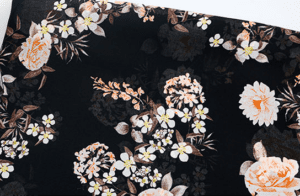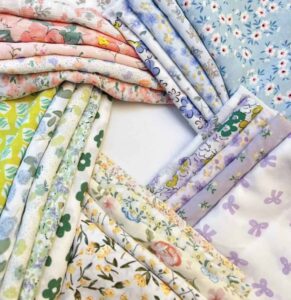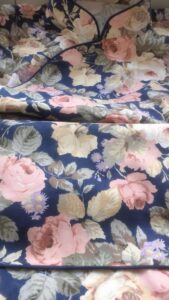
Finishing methods can be divided into two categories: physical/mechanical finishing and chemical finishing, and according to the purpose of finishing and the different effects produced, they can be divided into basic finishing, appearance finishing and functional finishing.

Purpose of post-organization
1.To make the width of the textiles neat and uniform, size and shape stability. Such as fixed (stretching), mechanical or chemical shrinkage, wrinkle prevention and heat setting, etc.
2.Enhance the appearance of textiles: including improving the luster and whiteness of textiles, enhancing or weakening the lint on the surface of textiles. Such as whitening, rolling, electric light, Yavin, grinding, shearing and shrinkage, etc.
3.Improve the feel of textiles: mainly using chemical or mechanical methods to make textiles such as soft, smooth, plump, stiff, light or thick and other comprehensive touch feeling. Such as softness, stiffness, weight gain, etc.
4.Improve the durability of textiles: mainly using chemical methods to prevent damage or erosion of sunlight, atmosphere or microorganisms on the fiber, extending the service life of textiles. Such as anti-moth, anti-mildew finishing, etc.
5.Give textiles special properties: including making textiles with some protective properties or other special functions. Such as flame retardant, antibacterial, water repellent, oil repellent, UV protection and anti-static.

The development of fabric finishing technology towards product functionalization, differentiation, high-grade, processing technology diversification, depth direction, and emphasize the improvement of the product taking performance, increase the added value of the product. In recent years, the introduction of various new technologies (such as low-temperature plasma treatment, bioengineering, ultrasonic technology, electron beam radiation treatment, inkjet printing technology, microencapsulation technology, nanotechnology, etc.) from other technical fields to improve the processing depth and obtain good finishing products. With human concern about environmental pollution and damage, more and more attention to health, advocate “low-carbon” economy, finishing technology requires environmental protection “green” processing, production “clean” The “low carbon” textile products.

The basic finishing methods of fabrics are: the finishing methods to stabilize the size and improve the appearance, the finishing methods to improve the feel and optimize the performance, the finishing methods to make the fabric multi-functional and high value-added, the finishing methods to make the fabric advanced, and the finishing methods to meet the special requirements.
Various finishing processes are as follows.
Pre-shrinkage
Pre-shrinkage is the process of reducing the shrinkage of the fabric by physical methods to reduce the shrinkage rate after soaking. Mechanical pre-shrinkage is the fabric first by the spray steam or spray to wet, and then applied to the warp mechanical extrusion, so that the flexural wave height increases, and then by the loose drying.
Stretching
Stretching is the use of cellulose, silk, wool and other fibers in the wet conditions of plasticity, the width of the fabric will gradually broaden to the required size for drying, so that the fabric form to stabilize the process, also known as fixed width finishing.

Sizing
Sizing is a finishing process in which the fabric is dipped in a sizing solution and dried to obtain a thick and stiff feel.

Heat setting
Heat setting is a process to make thermoplastic fiber and blends or interwoven products relatively stable, mainly used for the processing of synthetic fibers such as nylon or polyester and their blends which are easy to shrink and deform after heat. After heat setting, the fabric can improve the dimensional stability and feel stiffer.

Whitening
Whitening is the process of increasing the whiteness of textiles by using the principle of light complementary color, also known as whitening. There are two types of whitening methods: blueing and fluorescent whitening.

Calendering, electro-glossing and grain rolling
Rolling is a process of using the plasticity of fiber under the condition of wet heat to roll the surface of fabric to flatten or roll out the parallel fine oblique grain to enhance the luster of fabric. The flat rolling is made up of hard rollers and soft rollers to form a hard rolling point. After the fabric is rolled and pressed, the yarn is flattened, the surface is smooth, the luster is enhanced, and the feel is hard and firm. Soft rolling is made up of two soft rollers with a soft rolling point. After the fabric is rolled and pressed, the yarn is slightly flattened, with a soft luster and soft hand.
Electric polishing is the use of electrically heated rollers to polish the fabric.
The pattern of rolling is made up of steel rollers and soft rollers engraved with sun pattern, and under the condition of hot rolling, the fabric can get the pattern with luster.
Abrasion, Brushing
The process of grinding a short and dense layer of pile on the surface of the fabric with abrasive rollers (or belts) is called abrasion, also known as brushing, which can make the warp and weft yarns produce pile at the same time, and the pile is short and dense.

Pilling
Pilling is the process of picking up the fibers on the surface of the fabric with intensive needles or thorns to form a layer of pile, also known as brushed finishing, pilling is mainly used for coarse woolen fabrics, acrylic fabrics and cotton fabrics. The pile layer can improve the warmth of the fabric, improve the appearance and make the hand feel soft.
Shearing
Shearing is the process of using the shearing machine to cut off the unwanted fuzz on the surface of the fabric. Its purpose is to make the fabric weave pattern clear, surface clean, or make the pile, pile fabric pile or pile surface neat. General wool, velvet, artificial fur and carpets and other products need to cut hair.

Softening
Soft finishing has mechanical finishing and chemical finishing two methods, mechanical soft finishing is achieved by repeatedly rubbing the fabric bending, after finishing soft effect is not ideal. Chemical soft finishing is applied to the fabric softener, reduce the friction coefficient between the fiber and yarn, so as to obtain a soft, smooth feel, and the finishing effect is significant.
























